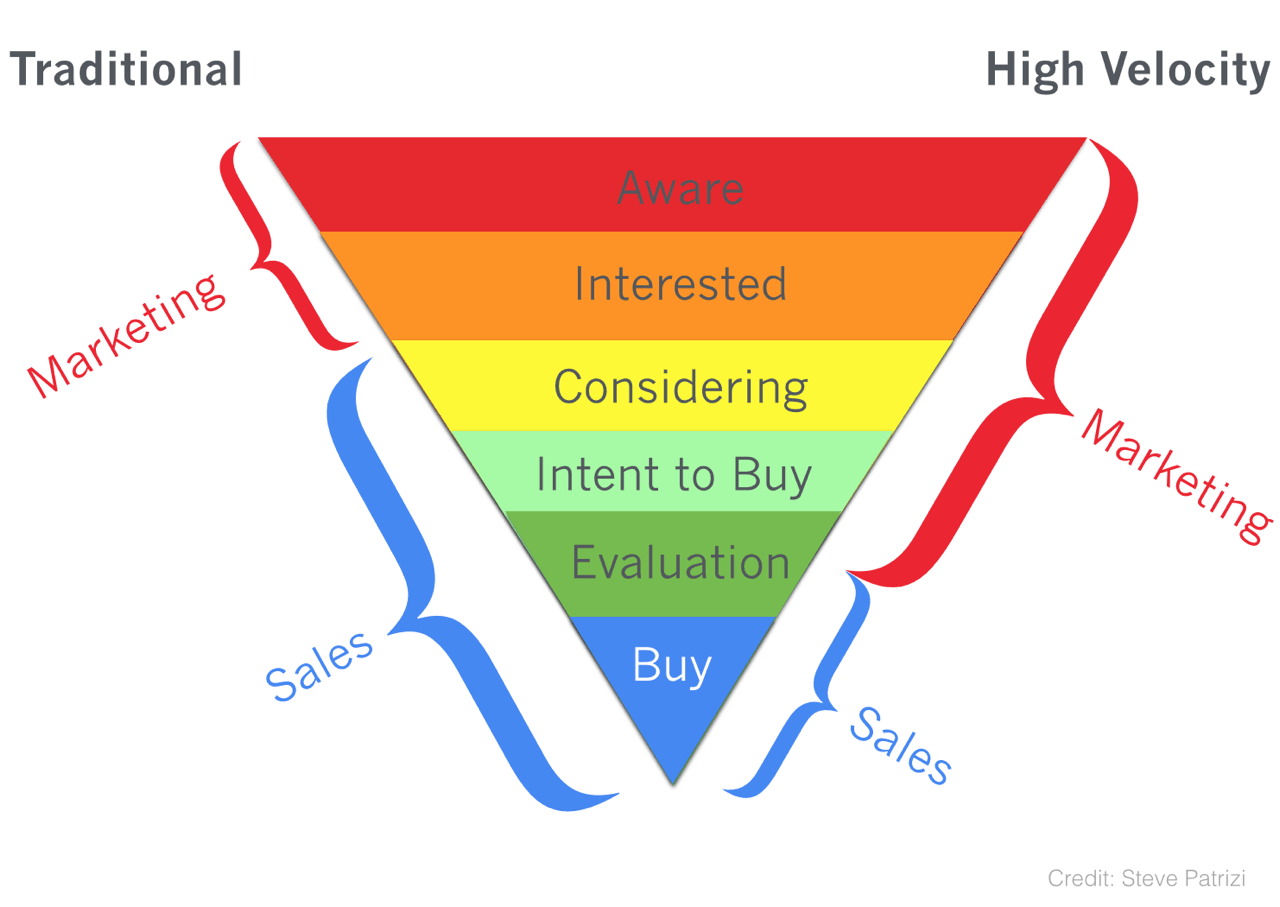The role of the marketing team within SaaS has stretched from simply engendering awareness and creating interest, to guiding customers much deeper into the funnel. Steve Patrizi created the schematic above that illustrates the idea beautifully.
In traditional go-to-market models, marketing teams fill the very top part of the funnel. When a potential customer enters the consideration phase of the buyer journey, the marketing team transitions the lead to his sales account executive, who educates the customer from the consideration stage through purchase.
In the new model, marketing shepherds the customer from awareness through some portion of product evaluation. In freemium products, marketing cares for the customer through most of the product evaluation stage, at which point either customer success or sales closes the deal. In higher price point sales, sales picks up the customer after the customer indicates an intent to purchase. In either case, marketing ushers customers through substantially more of the funnel, than in the past.
This change has three important ramifications for SaaS startups. First, the scope of marketing activities has broadened significantly. The most sophisticated marketing plans today deploy at least nine disciplines which range from content marketing, to evangelist recruitment, to customer lifecycle marketing, to cohort conversion analysis. B2B marketing has become radically more complex. Consequently, marketing team sizes should grow as a fraction of total team size in newer model software companies
Second, the marketing budget marketing will swell to match this expanding responsibility. In 2014, Gartner predicted Chief Marketing Officers would control more budget than Chief Information Officers by 2017, and the initial data shows the trend to be accurate. This substantial shift of dollars has led to an explosion in the number of startups and product serving the CMO. The most recent landscape for marketing products totaled more than 2000 alternatives. I expect to see many more startups chasing CMO dollars.
Third, the new expanse of marketing disciplines demands that the ideal head of marketing be informed and adept at each, able to recruit team members and evaluate performance. Of course very few candidates will be able to claim mastery in each of the disciplines. So, it is incumbent for each startup to determine which of the disciplines is most important, given the goals and the stage of the business.
The advantages of the high velocity software go to market are hard to overstate. These companies build more defensible, faster moving, and more capital efficient businesses. With those advantages, come the trade-off of additional complexity in the marketing department. But managed well, they can lead to exceptionally successful startups.
